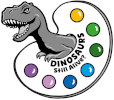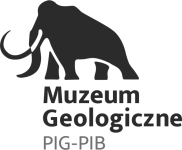
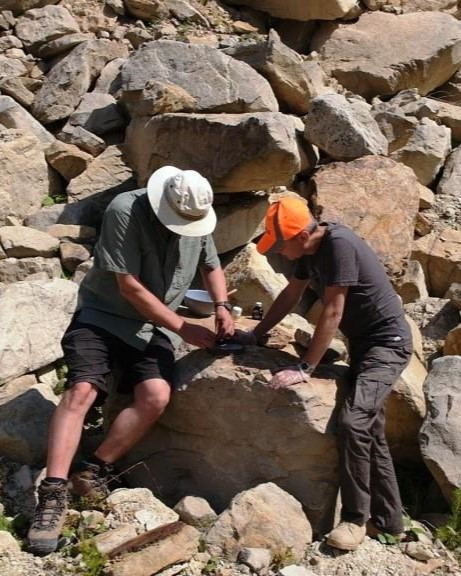
Naukowcy pracujący w terenie.
In July 2021, two scientists from the Polish Geological Institute - National Research Institute, the late Prof. Grzegorz Pieńkowski and Dr. Grzegorz Niedźwiedzki, were conducting inventory of dinosaur trace sites in the Świętokrzyskie region. During the work, they used satellite imagery to see if there were any new areas worth checking. After analysing these images, the two scientists found that a large white spot was visible in a location they had not known before.
They went there - and it happened! The spot turned out to be a newly created pit, where raw materials were extracted for construction purposes, and there were numerous traces of reptiles. The scientists quickly realised that they were dealing with a unique site.
What should be done with such a discovery? It is crucial to determine the exact age of the rocks so that the finds can be compared with global data. This is not easy, so a combination of multiple methods is often used. Sedimentological analysis, stratigraphic-sequence analysis, chronostratigraphic analysis using isotopic methods and palynological analysis was carried out in Borkowice. This allowed the age of the newly discovered rocks to be determined at 199.5 million years.

Warstwy skalne w Borkowicach.

Tropy dinozaurów drapieżnych z Borkowic.
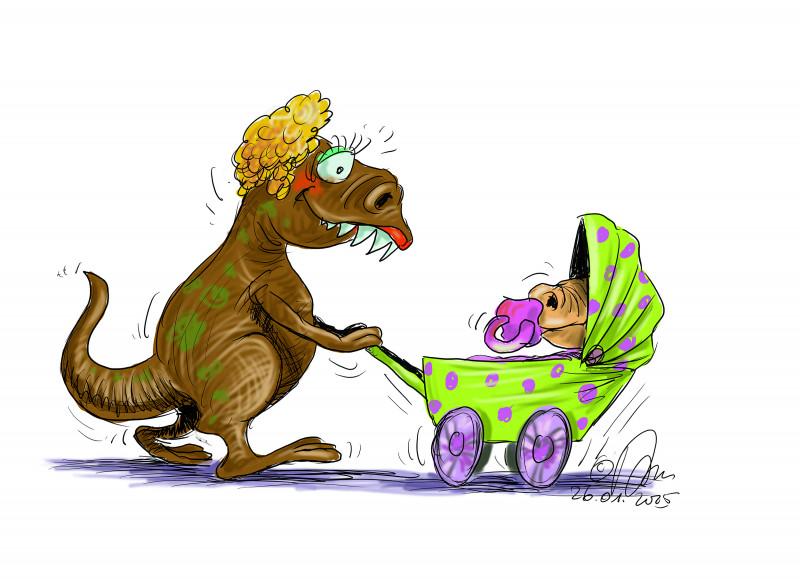

Odsłonięcie w kamieniołomie w Borkowicach.

Trop dinozaura drapieżnego z Borkowic.
It quickly became clear that the reptile traces from Borkowice were unique. Fossilised footprints are not at all as common as we might think. Imagine walking on sand where your footprints disappear immediately. When walking on hard ground, you leave no footprints at all. Ideally, the sediment your are stepping on should be malleable enough for the shape to be imprinted and be clear long enough to be covered by other sediment. So the very creation of a trace is a synergy of many factors and a lot of luck.
According to the study, 200 million years ago a marginal marine environment dominated in the vicinity of Borkowice. The environment there was warm and pleasant, with easy access to the water - just like during summer holidays.
And what animals lived in Borkowice? By far the must numerous are the distinctive three-toed traces of predatory dinosaurs, both large and small. Some traces are up to 40 cm long! Traces of avian dinosaurs and zauropodomorphs were also found.

Skan 3D powierzchni skalnej z tropami.

Bloki skalne z tropami, znalezione podczas wykopalisk.
In addition to traces, bones are found preserved as natural moulds or casts, which provide a lot of anatomical information about their owners. It is safe to say that Borkowice has become a mine of knowledge about the diversity of the dinosaurs that once lived there.
Borkowice is a real fossil treasure trove - a site that is unique in every respect, providing an opportunity for scientists to learn more about the early evolution of dinosaurs.
We hope that this story will inspire artists to create works that also refer to the 'idyllic' life of the dinosaurs in Borkowice? And the winners of the Competition will have the opportunity to participate in a trip to this unique place. They will be able to see what fieldwork is like and how dinosaurs are tracked!
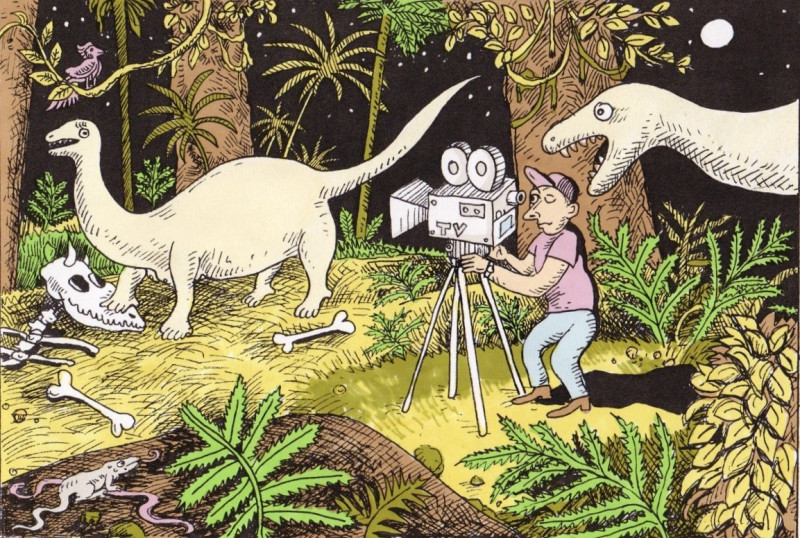
T. Niewiadomski
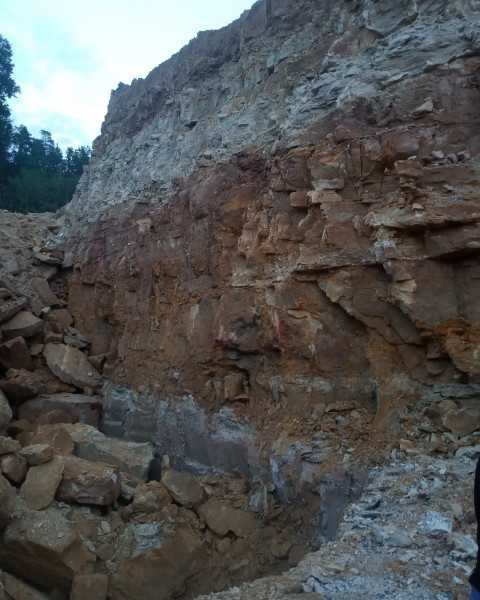
Odsłonięcie w kamieniołomie w Borkowicach.
